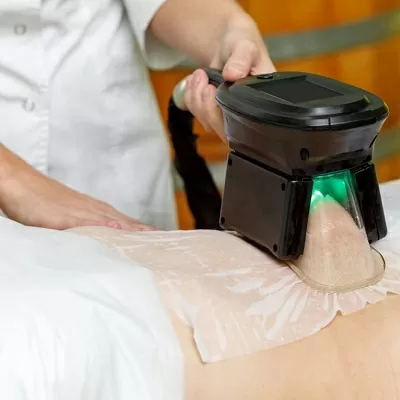The cosmetic procedure known as Coolsculpting, also known as cryolipolysis, eliminates stubborn fat in problem regions of the body. The fat cells are killed and broken down as a byproduct of the freezing process, which is how it works.
The Coolsculpting technique is considered non-invasive since it does not need any incisions, anesthesia, or the insertion of any surgical equipment into the body. In 2018, the body-shaping operation was performed the most often in the United States.
This article offers a comprehensive look at Coolsculpting, including its operation, efficacy, cost, and potential adverse effects and hazards associated with the surgery.
CoolSculpting: What is it?
The term “cryolipolysis” refers to the process used in the “Coolsculpting” brand.
Cryolipolysis, often known as Coolsculpting, is a fat removal procedure marketed under the brand name Coolsculpting.
It works by exposing fat cells to temperatures below freezing to break them down, much like other types of cryolipolysis. Cold temperatures have a greater impact on fat cells than they do on other types of cells. This indicates that the cold does not cause harm to other cells, such as those found in the skin or the tissue below it.
During the operation, the medical professional will suction the skin that is located above the region of fatty tissue into an applicator that will chill the fat cells. The area is rendered numb by the low temperatures, and some individuals have reported experiencing a chilling sensation.
After the surgery, it might take four to six months for the fat cells to be eliminated from the body. In that amount of time, there will be an average 20% reduction in the total fat area.
Does the Coolsculpting procedure work?
The effectiveness and patient satisfaction with CoolSculpting and other cryolipolysis is quite high.
However, individuals need to be aware that the effects of the therapy are only going to be felt in the regions that have been targeted. Additionally, it does not cause the skin to become tauter.
A person who goes through the Coolsculpting procedure but doesn’t change their poor eating or sedentary lifestyle should anticipate less fat loss overall.
Results
The Coolsculpting procedure is an efficient method for eliminating regions of resistant fat. Within four to six months, the body will eliminate the fat tissues that have been frozen and broken down.
The technique also produces long-lasting outcomes. It dissolves fat cells, making it impossible for new ones to form.
The procedure’s potential for adverse consequences and complications
Since cryolipolysis is a non-invasive process, there is no need for incisions, anesthetics, or drugs that might trigger an adverse response. This indicates that the risk of experiencing difficulties and adverse effects is lower than it would be with a more intrusive technique, such as liposuction.
According to research published in the Aesthetic Surgery Journal, an investigation of 1,445 patients revealed that just 12 patients, or less than one percent, had problems. The loss of feeling in the treated region after the procedure was the most frequent problem that occurred.
Other potential issues include the following:
- bruising
- localized pain
- redness
- sensitivity
- swelling
PAH is uncommon and may be treated with the standard liposuction technique. On the other hand, this occurs more often in older units and applicators, as well as in certain individuals with traits that make them more likely to develop the ailment.
How long does the Coolsculpting procedure take?
Fat cells are dissolved with Coolsculpting, and those that have been eliminated do not come back. Even research from 2016 indicated that the effects might last between 6 and 9 years.















